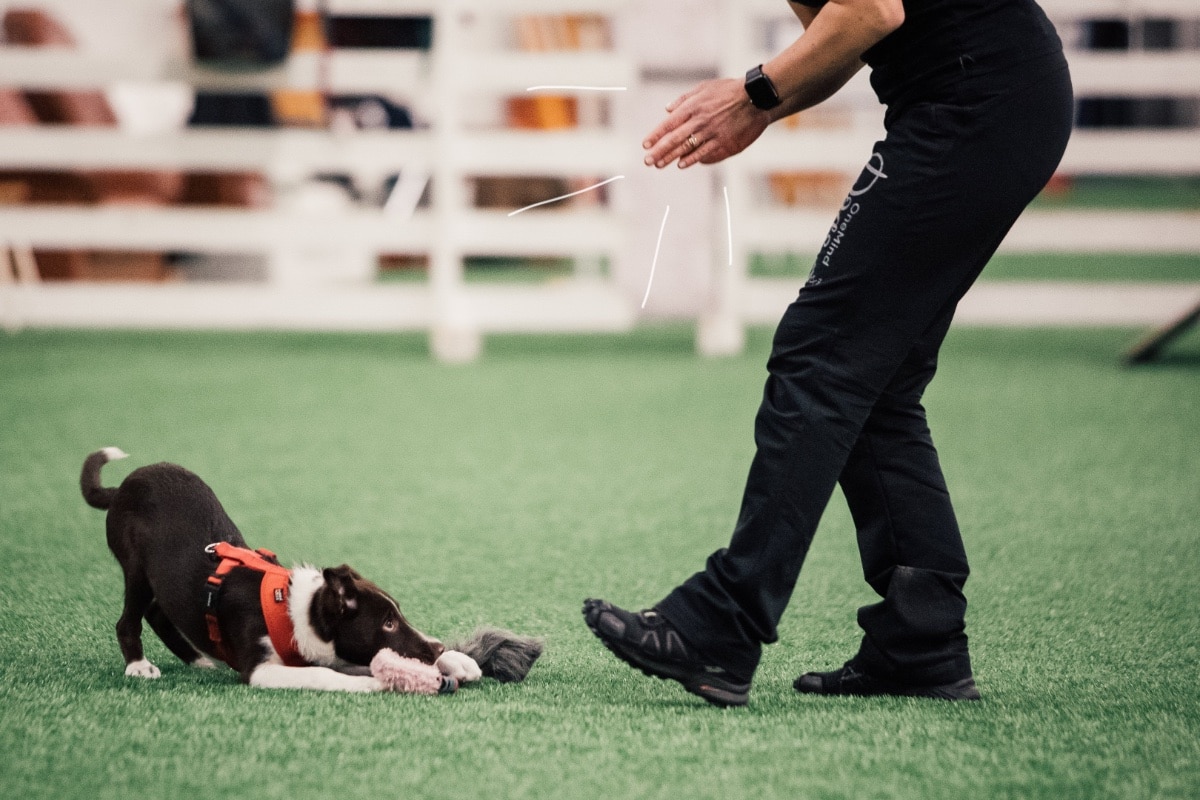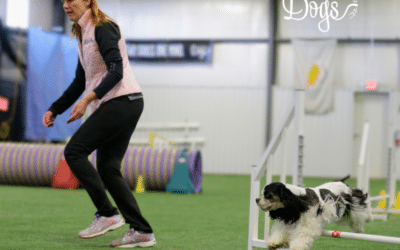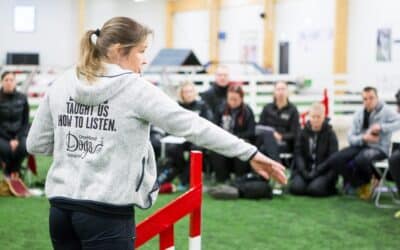When most people think about agility, you’d picture the soaring jumps, tight weaves and razor-sharp turns. In no way would agility be suitable for puppies. Right?
At a competitive level, sure. But in reality, dogs as young as a few months old can build the foundations for their agility careers – or, of course, just have awesome fun and learn new skills with you!
We have customers ask us all the time: “But isn’t my puppy too young to start agility?”
It’s true that there are certain movements, exercises and techniques that puppies and young dogs shouldn’t attempt before they’re fully grown. Puppies’ bones are soft, and growth plates are open until they’ve finished growing – so overexerting them or encouraging dangerous movements can cause permanent and severe damage.
They can, however, get started on fun games and exercises that prepare their minds and bodies for learning big-dog agility in the future. And the best part is, a lot of it will come naturally to them!
How does agility training for puppies work?
Agility for puppies is all about playing together, building a strong relationship and just having fun!
When learning agility foundations (and in our OneMind Dogs course, Foundation for Agility), it’s essential to start with super simple, super basic stuff. Some exercises look like fun games rather than agility, and you don’t even need equipment to get started.
Let’s go through a couple of key topics we include in the Foundation for Agility course, and why they’re important to get right early on.
Desensitizing to noises and surfaces
Before getting started with any kind of agility foundation training, your pup will need to go through all of the regular socialization practice that all puppies should experience – regardless of if they’ll grow up to be an agility superstar or not.
Socialization isn’t just about meeting dogs and people. It’s about safely exposing your dog to smells, sights and sounds they might hear over the course of their lives. Or, in this case, on the agility course.
The sounds and surfaces at an agility competition or training center are much different from those in your puppy’s everyday life. The track might feel funny under their paws, and all of the excitement from the humans and dogs in the room could be a little stressful or distracting.
Practicing calming exercises
Gaining and keeping focus is at the core of agility practice, so getting to know your puppy’s mental state and the things that excite them (and calm them down) is a great next step.
When teaching calmness, it’s important to know:
- What excites your puppy
- What kind of toys they like
- Whether they like to play gently or rough
- What their favorite treaties are
- If they like to be petted or prefer their space
- Their anxieties and what they’re afraid of
When you understand these things, it’s easier to train your puppy to calm down for training or competition in a way that works for them.
Teaching your puppy to use their body in a balanced way
Just like us humans have a better, stronger and more coordinated side, so do our dogs!
And because the dog has to move in every possible direction on the agility course, teaching body awareness and movement on their left and right sides equally is a critical part of their basic training. On top of that, it’s also possible that a significantly stronger side could leave a dog more prone to injury.
Proactively preventing problems from occurring
Like anything in life, it’s much easier to prevent a problem than try and fix it. With dogs and agility, it couldn’t be more important.
When OneMind Dogs method creator and leading coach, Janita Leinonen, started coaching Agility, she saw the same problems arise again and again (like dogs taking every obstacle they see, or relying too heavily on their handler)..
So, when she developed the Foundation for Agility course, she made sure to address even the smallest of problems that handlers might overlook. You can read an even more detailed explanation of the basic training here.
Basic agility handling techniques
The OneMind Dogs method teaches almost 30 handling techniques. It might seem like a lot, but the first 20 (the basic techniques) are purely natural reactions by the dog to the handlers’ cues. Cool, right?
Even better, you can get started with several of these techniques at the foundation level (with some adapted for puppies and young dogs, of course) without having to complete many repetitions.
Getting started with agility
If you’re interested in getting those turns and wraps ready for the agility arena, or just looking to have fun as a team, OneMind Dogs Foundation for Agility is seriously awesome. All the games, exercises and techniques you’ll need in a super-simple, easy to follow course for puppies, young dogs, and older agility newbies too!
Oh, and it’s on sale right now – get your 6-month subscription for 40% off until June 30th. Check out the summer deal by clicking the button below. Woohoo!



